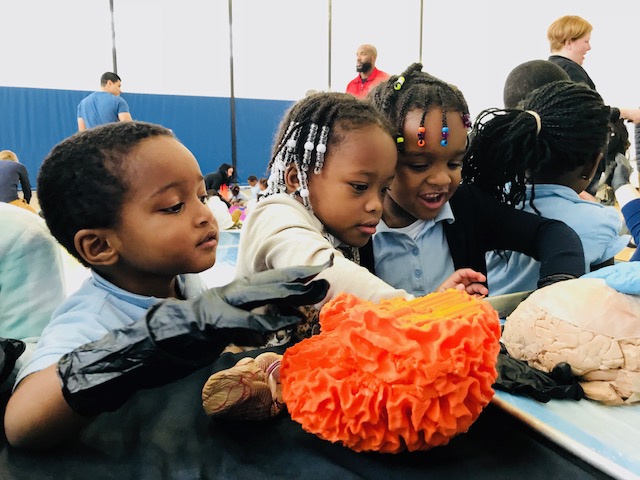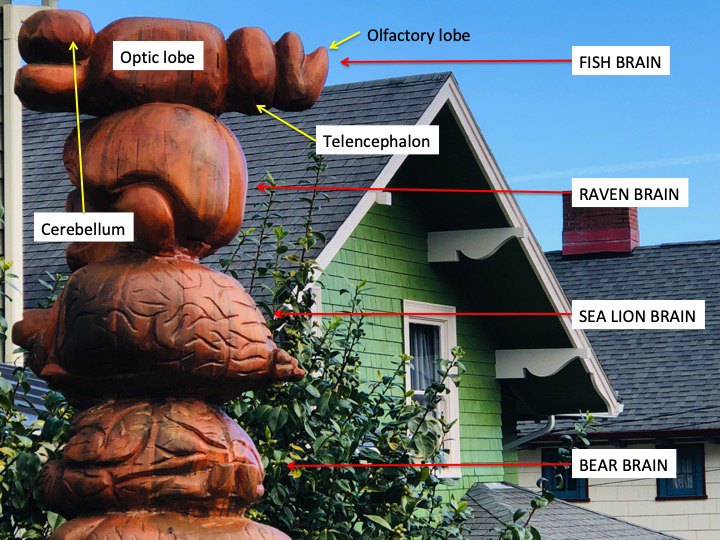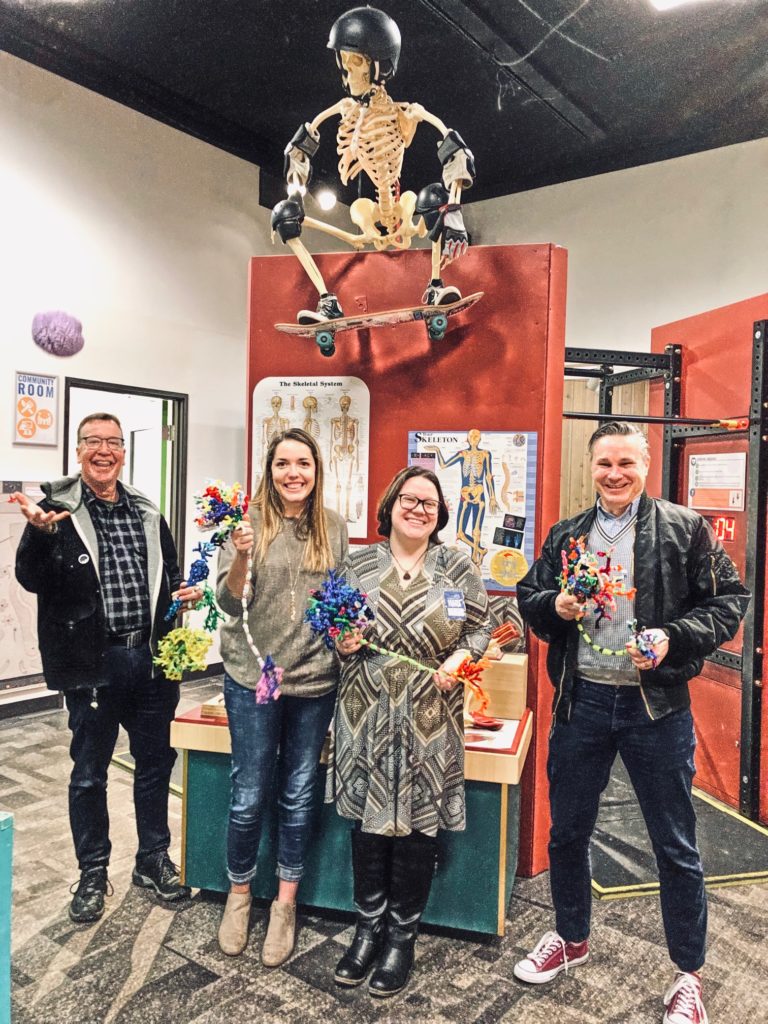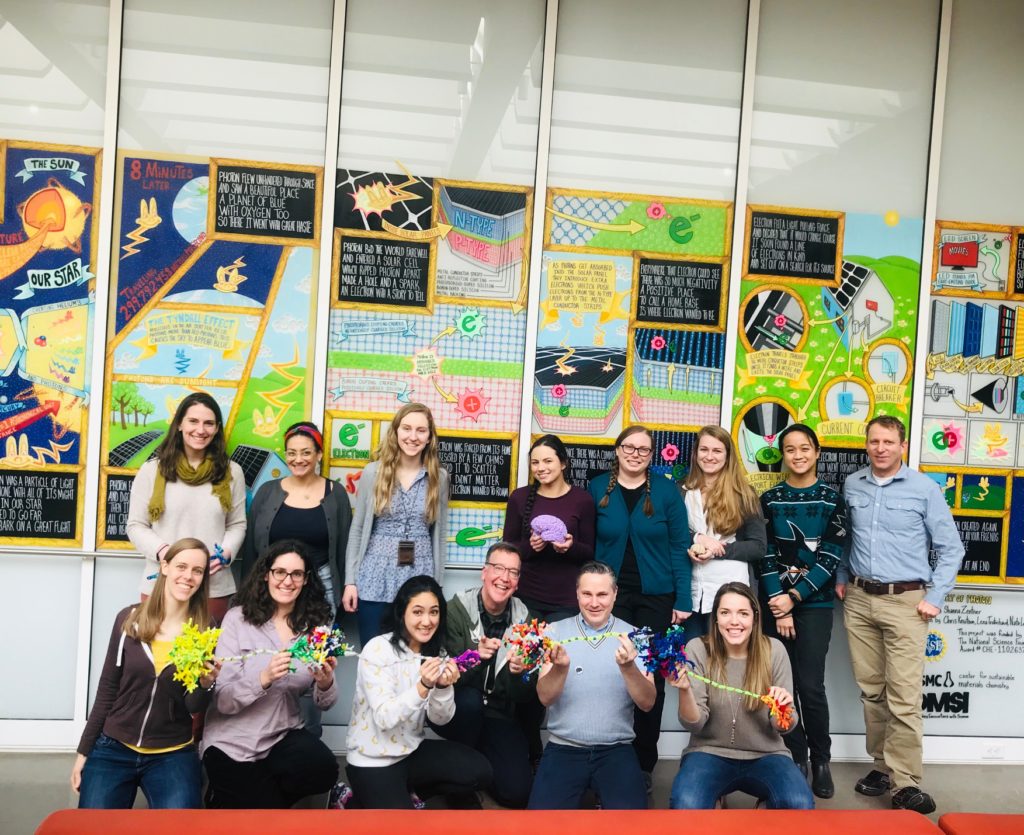“Knowing something about the deep origins of humanity only adds to the remarkable fact of our existence: all of our extraordinary capabilities arose from basic components that evolved in ancient fish and other creatures.” ― Neil Shubin, Your Inner Fish

Going places and reaching out, listening and reflecting, and sharing stories from diverse perspectives about our common humanity, brains and drive to understand who we are through research, storytelling and art is one of the most enjoyable, inspiring and healthy endeavors we’ve found…

We are a little less enamored of corporate, one size fits all, purportedly “validated” top down models of instruction and outreach, which are often disconnected from real classrooms, serve mainly resource-rich populations, add to an ever-expanding, inaccessible “education research” vocabulary, primarily support the marketing and financial needs of large institutions, and help sell proprietary textbooks, academic certifications, faculty conferences and tests…
LEARN MORE: The Needless Complexity of Academic Writing
LEARN MORE: How open science helps researchers succeed
LEARN MORE: Sharing scholarship to improve research and education
LEARN MORE: Of Mice and Academics: Examining the Effect of Openness on Innovation

REACHING OUT: Leave your campus, listen, reflect, share stories and make art with more people to learn how to better communicate science and broaden the impact of research. Try time honored “pedagogic” traditions of direct community engagement, mentorship, apprenticeship, collaboration, storytelling – and teaching
Thanks to Rachel Lukowicz, a graduate student in Adam Miller’s Lab at the University of Oregon, we were invited to share this message with the exciting Institute of Neuroscience (ION) in Eugene!

ION, according to Rachel, “aims to reveal neural development and function through examination of neurons, circuits, behavior and cognition.” She studies synapses, both chemical and electrical, thanks to ION’s extensive zebrafish colony…


Did you know that 20% of synapses in adult vertebrates, including zebrafish and people, are electrical? There are even more in early development. From Rachel: “When you remove the proteins that form electrical synapses (called connexins in vertebrates; innexins in invertebrates), fewer chemical synapses subsequently form, suggesting that electrical synapses build an initial and critical blueprint of the nervous system…”
LEARN MORE: Gap junction expression is required for normal chemical synapse formation
LEARN MORE: Characteristics and plasticity of electrical synaptic transmission
LEARN MORE: Electrical Coupling and Neuronal Synchronization in the Mammalian Brain
LEARN MORE: A genetic basis for molecular asymmetry at vertebrate electrical synapses
LEARN MORE: Electrical synapses and their functional interactions with chemical synapses
LEARN MORE: Neuronal gap junctions: making and breaking connections during development and injury
LEARN MORE: Neuronal wiring in the nematode
Zebrafish research began at the University of Oregon. Dr. George Streisinger pioneered the study of zebrafish (Danio rerio) as a model organism, and the university now has one of the largest zebrafish colonies in the world!

These colorful vertebrates have a fully mapped genome, with substantial similarity to our own. They are also transparent, develop quickly and are used extensively in research on human pathology…
LEARN MORE: Zebrafish Models of Human Disease: Gaining Insight into Human Disease
LEARN MORE: Think Small: Zebrafish as a Model System of Human Pathology
LEARN MORE: Animal models of human disease: zebrafish swim into view

Fish brain in araucaria wood (though not to “scale…” :); Matt Cartwright, Astoria OR

Dr. Streisinger was also known for integrating the arts into his teaching; for example, he enlisted the Dance Department at the University of Oregon to collaboratively demonstrate the process of protein synthesis!
LEARN MORE: The Doctor of Delayed Publications: The Remarkable Life of George Streisinger (1927-1984)
The University of Oregon is also home to the Brain Development Lab, founded by visionary neuroscientist and outreach practitioner and proponent Helen Neville, who recently passed.

It was an honor to meet the inspirational Dr. Neville years ago, when I applied to the Cognitive Neuroscience program at the University of Oregon. I was awestruck to discover her “mobile brain lab” – a converted RV she took on the road to collect EEG data in communities throughout the northwest!

I like to think that our on the road outreach with Noggin volunteers, including Jordan Ray from Portland State University, who developed his own low-cost electrophysiology equipment and is currently reading EEGs in Mexico, is traveling in the same vein…
LEARN MORE: UO’s Helen Neville, a leading brain scientist, passes at age 72
LEARN MORE: Changing Brains: Effects of Experience on Human Brain Development
This successful tradition of innovative multi-disciplinary investigation, outreach and teaching clearly lives on in Eugene, and Rachel offered us an exciting NeuroArt tour of campus! This included the beautiful zebrafish embryo painting by artist and ION graduate student Sarah Stednitz…

Sarah and fellow artist/ION grad student Angie Michaeil have also added Golgi-stained neurons drawn originally by Santiago Ramon y Cajal to various Duck hallways…

We were exceptionally thrilled to meet the inspirational artists and neuroscientists who created the celebrated Museum of Scientifically Accurate Fabric Brain Art! When first organizing our own art & brain courses, we were excited to discover and share this useful resource and watched our students open up to the creative possibilities inherent in cross-disciplinary collaboration…

We crafted a Duck-themed pipe cleaner neuron as a thank you gift for Rachel…
Artist and UO psychologist Marjorie Taylor, who studies the development of imagination and creativity, showed us her beautiful hooked rug from the museum, titled “Bill’s Brain,” detailing MRI images of her husband and UO Economics professor Bill Harbaugh‘s own cerebrum…


It is always exciting to visit a university campus that clearly values and supports innovative, multi-disciplinary outreach and teaching!
We also had the honor of viewing artwork, both sculptural and through virtual reality goggles, created by artist and grad student Marike Reimer in psychologist Matt Smear’s olfactory lab at ION…


The olfactory system, by Marike Reimer, also a celebrated painter of “miniatures…”

Aaron Eisen of the PSU Neuroscience Club exploring Marike’s VR neuronal world…
We spent a gorgeous day meeting with ION faculty, including Kate Mills and Elliot Berkman, discussing how to integrate arts in STEM (STEAM), and best practices for science communication courses. For the latter, we said to go more places (including homeless youth shelters, correctional facilities, bike shop pubs and even Congress), listen first, be open to learning, consider real world therapeutic and policy implications of research, and avoid the standardized elevator pitch..!

A memorized pitch might be expected at a conference with peers but seems scripted and false in a K-12 classroom or at a public event. Listening and responding to what people already know, and what they’re curious about, is more genuine and effective.

More #sciart at UO: hammered copper Drosophila fly head by Wayne Chabre
LEARN MORE: Introduction: Drosophila—A Model System for Developmental Biology
We also enjoyed the opportunity to tour the Eugene Science Center with Education Director Karyn Knecht! They have so many wonderful, compelling, locally hand-built exhibits, thanks to Exhibits & Facilities Director Jeff Franzen and his creative staff…



Learning about concussions at the Eugene Science Center, located appropriately near “Uncle Phil‘s” (Phil Knight‘s) looming Ducks football complex…

LEARN MORE: Protecting Noggins @ the Newmark
LEARN MORE: Frequency of Head-Impact–Related Outcomes by Position in NCAA Division I Collegiate Football Players
LEARN MORE: Chronic Traumatic Encephalopathy in Professional American Football Players: Where Are We Now?

We are indebted to the accomplished and enthusiastic graduate and post-doctoral researchers, artists and outreach volunteers of Womxn in Neuroscience @ UO, an organization seeking gender equity in science. Their mission is to “redefine the scientific community to be one in which womxn are empowered to pursue genuine self-expression, scientific endeavors, and career advancement at all levels.”

Excited about building a more inclusive future in neuroscience-related careers!
We thoroughly enjoyed our lunch discussion about innovative teaching, arts-integrated outreach, institutional biases and multiple career paths in neuroscience, and look forward to collaborating on outreach projects in the future!
LEARN MORE: Gender disparities in high-quality research revealed by Nature Index journals
LEARN MORE: Why So Few? Women in Science, Technology, Engineering, and Mathematics
LEARN MORE: Gender (in)equity in the academy: Subtle mechanisms and the production of inequality
LEARN MORE: Underrepresentation of Women in Science: International and Cross-Disciplinary Evidence and Debate
LEARN MORE: Women Scientists in America’s History

We then presented our Noggin seminar on outreach!

Aaron Eisen, the Outreach Coordinator for the Portland State University Neuroscience Club, joined us to describe his own experiences and wrangle brains for ION attendees..!

Science needs investment, and engaging people builds support for research and education. Integrating arts in STEM (“STEAM”) fosters innovative engagement.

Generating excitement and awareness of discoveries in neuroscience through arts-integrated outreach across institutional, disciplinary, state, federal and generational lines trains new scientists to collaborate on important community concerns, and increases awareness and support for investment in brain research and the arts.

SLIDES (ppt): Brain Awareness SLIDES 2019 UO
SLIDES (pdf): Brain Awareness SLIDES 2019 UO

DO MORE OUTREACH: Synapsing in San Diego @ SfN!
MANY THANKS to Rachel and the welcoming students, faculty and staff at the University of Oregon’s Institute of Neuroscience! Thank you for inviting us to Eugene, and we’re excited to collaborate on innovative outreach in the future…!



